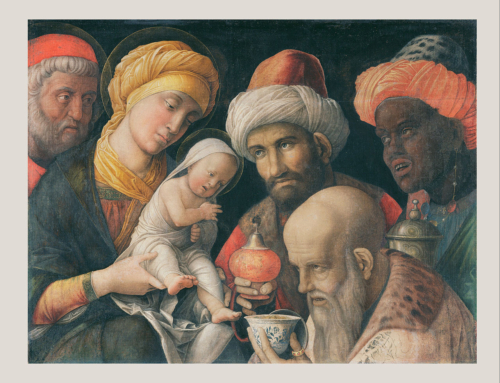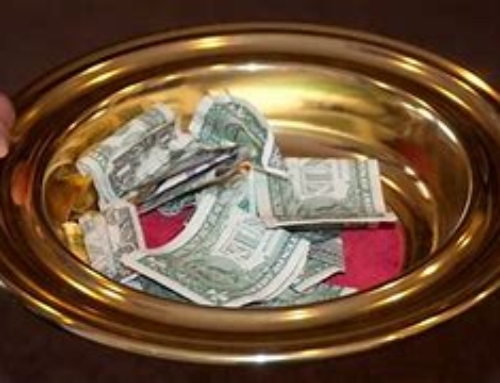If you want to understand why the Catholic Church in America is in such a dire condition, here is the explanation. Thomas Reese SJ is a kind of high priest of NuChurch–that version of Catholicism which dominates the contemporary American Catholic establishment.
Father Reese lays out the problem very clearly when he admits that he doesn’t believe in transubstantiation. He says transubstantiation is out of date, out of touch and impossible to explain to modern Americans who have not studied Aristotelian metaphysics. Nonsense. I explain the doctrine very simply in a way everyone can understand. Maybe what Father Reese is acknowledging is that he doesn’t have the necessary skills to explain a philosophical and theological concept to ordinary people in a relevant way.
Instead Father Reese uses the spongy term “Real Presence.” Some time ago I wrote this article about the term “Real Presence” To summarize, the term “Real Presence” is not really a Catholic term at all. Instead it was developed among Anglican reformers as a way to squirm out of their explicit denial of transubstantiation. They were on trial for heresy and instead of denying transubstantiation (which would have got them burned) they affirmed their belief in the “Real Presence.”
The problem with this is that “the Real Presence” is a term that is also used by non-Catholics to refer to their beliefs about the Eucharist. I’ve heard Anglicans, Methodists and even a Baptist talk about “the Real Presence” at Holy Communion. They all mean something different by the same term.
No doubt this would please NuChurch priests like Fr Reese, but the use of this ambiguous term reflects a major problem in all theological and ecumenical discussion: people use the same terminology to describe totally different beliefs, but they then naively conclude that they all agree. The Catholic uses the term (or should) to refer to transubstantiation. The Anglican says he believes in “the Real Presence” and may be referring to consubstantiation (the belief that Christ is “with” or “beside” the consecrated bread and wine) or receptionism (Christ is received by the individual as he receives the bread and wine by faith) The term “Real Presence” used by a Baptist or Methodist may simply mean, “I feel close to Jesus when I go to our communion service once a month.” For others saying they believe in the “Real Presence” may simply mean that they have warm and cozy thoughts about Jesus when they see the red light in the sanctuary lamp.
The explanation of transubstantiation was developed in the Church in order to answer heretical views concerning the Eucharist. It used Aristotelian philosophical concepts to explain as simply and clearly as possible how the bread and wine are transformed to the Body and Blood of Christ. It has always been admitted that the philosophical explanation is limited. The mystery of Christ’s presence is more than a philosophical explanation, but that doesn’t mean the philosophical explanation is useless and should be abandoned.
Fr Reese goes on to explain in his article how he envisions a Eucharistic revival. As you might predict it is all about “The family of the church coming together to worship so they can then go out and live the gospel as they sing “We can Make a difference; yes we can!” In other words Thomas Reese thinks there can be a Eucharistic Revival with a bit more positive thinking, a bit more NuChurch fuzzy theology and an extra dose of 1970s spirituality.
Fr Reese’s recipe for a Eucharistic Revival seems to be “Our churches are empty. I know! let’s do more of the same thing that has emptied them! Obviously we didn’t do enough of the hip homilies, the “creative” liturgies, the mediocre music and the shallow social justice activism and puppy dogs and kittens catechesis.”
At the same time he rubbishes the real signs of Eucharistic Revival happening all around us: Young families flocking to church where the liturgy is either the Traditional Latin Mass or the Novus Ordo celebrated in a traditional manner. If Father Reese would like to see an example of Eucharistic revival I invite him to visit Greenville South Carolina where the churches are full to overflowing with young people. In our parish the Eucharistic Revival includes a bumper crop of converts every Easter (whoops. I forgot we’re not supposed to make converts anymore!) a parish school that is growing and has a waiting list for most classes, an active pro-life ministry among the poor, the homeless and to the local prisons.
Our traditional Catholic parishes are not full of people who wish to go back to the 1950s. There may be some who long for a golden age of the 1950s, but then there are some older Catholics–especially among some elderly Jesuits– who do not long for a return to the 1950s. They long for a return to the golden age of the 1970s.
If you’re interested in the principles of liturgy we have put into action at Our Lady of the Rosary, Greenville, check out my book Letters on Liturgy. It is an apology for beauty, reverence and tradition in worship without extremes. In line with the documents of the Second Vatican Council, but informed by the Traditional Latin Mass.







I can testify to the fact that OLR has a massive population of young families. Sometimes it’s hard to hear the homily. Not complaining.